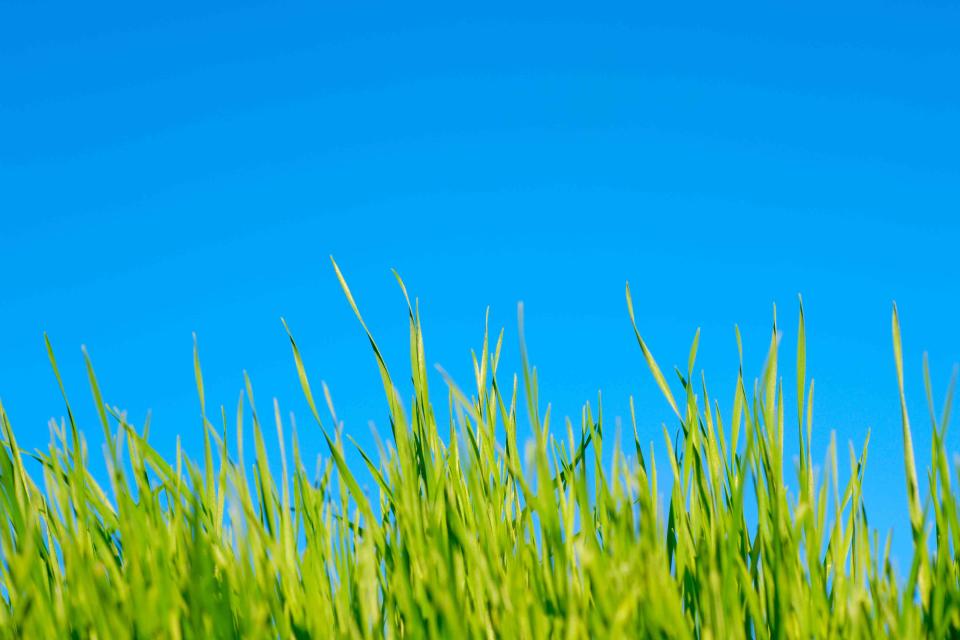Here's What to Know About the "No Mow May" Movement
It's intended to support pollinators, like bees and butterflies—but people have divided opinions.

john shepherd/Getty Images
The image of a perfectly manicured, neatly mown lawn is baked into the idea of the American dream. In fact, in many places, you can get fined for allowing your grass to grow beyond a certain height. So it's no surprise that there's some controversy surrounding a movement called "No Mow May" that's encouraging people not to mow their lawns for the entirety of the month of May. However, the divide in opinions on this movement isn't just about keeping up lawn appearances—it's about pollinators. Keep reading to learn more about No Mow May, how it started, and what people are saying about its pros and cons.
Related:Beautiful, No-Mow Alternatives to a Grass Lawn
What is No Mow May?
No Mow May is a campaign that started in 2019 in the United Kingdom by Plantlife, a conservation charity. The group's mission is to "secure a world rich in wild plants and fungi" for the health of the environment. No Mow May, which, as stated above, calls for people to leave their lawns untouched for the month of May, is an extension of that mission statement. Research has shown that consistently mowed lawns can diminish biodiversity, as they don't provide vital food for pollinators, like bees and butterflies. So, the purpose behind No Mow May is to allow grass and wildflowers to grow unbothered for a month to create habitats and food sources for early-season pollinators—when other flowers are scarce.
The No Mow May movement has started to gain more popularity in the United States. In 2020, Appleton, Wisc., became the first locality to create an ordinance giving people a choice not to mow their lawns in May—and more and more communities have started participating.
However, there is some debate as to whether the movement is as helpful to pollinators as it intends to be. Keep reading for more.
The Pros of No Mow May
One of the primary pros of No Mow May is that it's raising more awareness about the importance of promoting biodiversity—and how individuals can participate in the effort. As the Plantlife campaign page explains, "even the smallest grassy patches add up to a significant proportion of our land which, if managed properly, can deliver enormous gains for nature, communities, and the climate."
Save the Bees
No Mow May can play a part in supporting initiatives to save the bees. Bees are crucial to healthy ecosystems, because, according to the United States Department of Agriculture, in the United States, more than one-third of all crop production requires insect pollination—and honeybee colonies are our primary pollinators. So it's a circular relationship between us and the bees: We help provide food for them; they help provide food for us.
Reduce Pollution
Reducing the frequency of lawn mowing can also help decrease pollution. According to the U.S. Environmental Protection Agency (EPA), one hour operating a new gasoline lawn mower emits the same amount of volatile organic compounds and nitrogen oxide driving a new car 45 miles.
Strengthen Lawns and Use Less Water
Mowing your grass too often or too short can have adverse affects on your lawn—weakening it and limiting its nutrient supply. So, reducing the frequency of mowing can also help to strengthen your lawn and make it more drought tolerant—which, in turn, helps conserve water.
Related:Stop Believing These 9 Lawn Care Myths—Try These Tips Instead
The Cons of No Mow May
The most significant critiques of No Mow May aren't coming from anti-environmentalists or pollinator-haters. In fact, it's the opposite. Critics of No Mow May have concerns that the movement could be unintentionally harmful for pollinators, providing only a temporary safe haven, but failing to put in place more long-standing efforts.
The Wall Street Journal spoke with Doug Tallamy, a University of Delaware professor who has a Ph.D. in entomology, for his opinion on the month-long movement. As the article states, "Dr. Tallamy sees little logic in letting lawns grow longer for a few weeks. If people simply let their grass grow for a month and then revert to a clipped green monoculture, they are teasing pollinators with short-term snacks followed by starvation, he said."
Another expert, Tamson Yeh, turf specialist with the Cornell Cooperative Extension of Suffolk County in New York, told The Associated Press that she also finds the short-term solution counterproductive. “Bees tell each other where the food is, and pollinators—when they discover an unmown lawn—will remember to come back to it again and again,” Yeh told the outlet. “Then on June 1st, when the food disappears, it’s not good for them.” She added that pollinators can get confused when the grass is suddenly low again, giving predators more opportunity to take advantage of them.
These experts, and other critics of the No Mow May movement, advocate instead for providing more permanent habitats for pollinators. This can be done by replacing lawns—or at least part of them—with native plants and trees that will feed pollinators all season long.
Related:How to Create a Pollinator-Friendly Garden
For more Real Simple news, make sure to sign up for our newsletter!
Read the original article on Real Simple.


